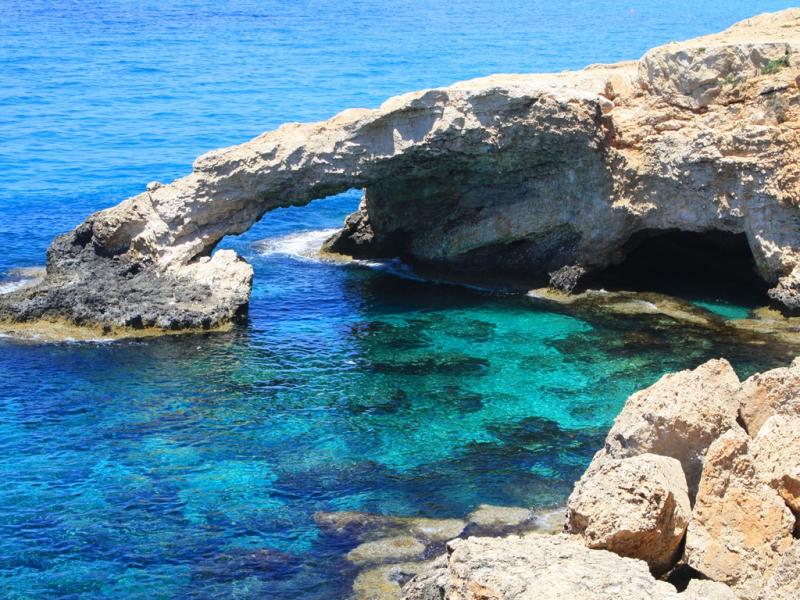
Historic Cyprus
By Sam Lucas
Sat in the cool waters of the European Mediterranean but just a short boat ride from Turkey and Lebanon, Cyprus was always destined to be a site of incredible strategic and historic importance. The island has been ruled by some of the finest (and most destructive) empires to have ever graced the earth. Since the earliest known human activity on the island in the 10th Millennium BC, Cyprus has seen the Egyptian, Roman, Persian, Byzantine, Ottoman, Venetian, and British Empires rise and fall, yet each has left their own indelible mark on the country’s small rural villages and rugged coastline. Since gaining independence in 1960, the island was subject to a coup d'état by Greek Cypriots and has twice been invaded by Turkish forces; the north of the country remain largely under Turkish control. This incredibly rich history has brought together cultural elements from around the world, influencing Cypriot music, dance, art, literature, and cuisine. It has also lent the country an incredible array of historical sites, ranging from Stone Age archaeological excavations to the 16th Century Venetian walls of the capital city, Nicosia. With such a fascinating back story and a wide range of well-preserved historical locations, the story Cyprus is waiting to be uncovered.
Tomb of the Kings
For those interested in history and architecture, there are fewer better sites to explore than the Tomb of the Kings in Paphos. Although no kings were buried in the area, the name of this UNESCO World Heritage Site derives from the sheer magnificence of the tombs. Carved out of solid rock, these well preserved underground chambers were used by the city’s residents from the 3rd Century BC to the 3rd Century AD, during the Hellenistic and Roman periods. Many of the tombs were built with Ancient Egyptian standards in mind; their belief that grave sites should reflect the houses of the living mean that many of Paphos’s tombs feature Doric columns and frescoed walls. Seven of the tombs have been recently excavated and are spread out over a wide area, making this the perfect site for visitors to stroll freely and explore for themselves. Although grave robbers looted many of the sites artefacts long ago, visitors can still descend the stone stairs and search through the sunken rectangular courtyards and narrow winding passages that lead to individual burial rooms. The Tomb of the Kings is a rare oasis of pure historical intrigue and discovery that is not to be missed.
Venetian Walls of Nicosia
Cyprus’s beautiful capital city is home to some of the best preserved Renaissance defensive fortifications in the Eastern Mediterranean. Replacing older walls deemed to be too weak to protect the city from potential Ottoman attack, the Venetians constructed a huge circular ring of high walls fortified by 11 heart-shaped bastions and an 80 metre wide moat. Viewed from a higher point or on a map, the city walls closely resemble a snowflake and give Nicosia its unique shape. Whilst the Venetian walls were ultimately a failure and the city was overrun by the Ottomans in 1570 before their construction could be completed, today they serve as a stunning reminder of the island’s incredible past. The moat surrounding the walls is now used for a range of cultural projects including public gardens and an open-air sculpture exhibition. Walking tours that follow the inside of the city walls pay special attention to the area’s medieval architecture and the many workshops where craftsmen still practice their traditional trades; including candle makers, cobblers, coppersmiths and tailors. Future plans for the walls include a sweeping, floor-lit design intended to paint the attraction in sharp relief whilst remaining in harmony with its ancient surroundings.
Painted Byzantine Churches in the Troodos Region
Nestled between the towering peaks of Cyprus’s largest mountain range, this site comprises 10 Byzantine churches and monasteries that now form a UNESCO World Heritage Site. All are richly decorated with stunning murals and range from small churches designed in a rural architectural style to large monasteries such as that of St John Lampadistis. Many of the structures display elements that were specific to Cyprus and shaped by its geography, history and climate, including steep-pitched wooden roofs and Byzantine masonry domes. The various wall paintings display an incredible range of artistic styles dating from the 11th to the 17th Centuries. Works ranging from the Constantinopolitan masters to the Italian Renaissance movement are on display, and offer a dramatic contrast to the simplicity of the rural architecture. Wandering between the different sites also allows you to take in the beauty of the Cypriot mountains and the small surrounding villages. A visit to see the painted churches offers an incredible dual opportunity: the chance to immerse yourself in the unique collection of Byzantine architecture and artwork twinned with the awe-inspiring natural beauty of their mountainous backdrop.
Walk the Line
Hidden almost out of sight by the sheer friendliness of its people and the tranquil beauty of its golden beaches is the fact the Cyprus remains a divided country. Since the invasions of 1974 a large part of the north east of the island has remained under Turkish control and in 1983 Turkish Cypriots proclaimed the Turkish Republic of Northern Cyprus (TRNC). Although the United Nations does not recognise the TRNC and the international community considers the northern part of the island to be occupied territory of the Republic of Cyprus, the situation has remained largely calm and stable in recent decades and steps have been made towards resolving the deadlock. Crossing into the north is now relatively easy but despite this, the Green Line – the 112 mile long border that divides the island – still holds a unique sense of mystery and eeriness. The United Nations Buffer Zone is home to crumbling houses and hotels that were abandoned in 1974 and still fascinate visitors to this day. Since the fall of the Berlin Wall, Nicosia has assumed the title of the world’s only divided capital city. Its international airport has remained deserted for the past 40 years, with old rusting planes still sat on its long-forgotten tarmac. Visitors can see physical evidence of the division at the Ledra Street Border Crossing, but remember to take your passport if you want to pass into the north. The Cyprus Tourist Organization has signposted a walking tour which takes visitors around some of the main points of the Green Line in Nicosia. This physical embodiment of the island’s chequered past is both fascinating and tragic in equal measure, but the generally relaxed atmosphere at the crossings and in the cafes and restaurants of Nicosia is a sign of the hopeful atmosphere than now grips modern day Cyprus.
Share this article:



















